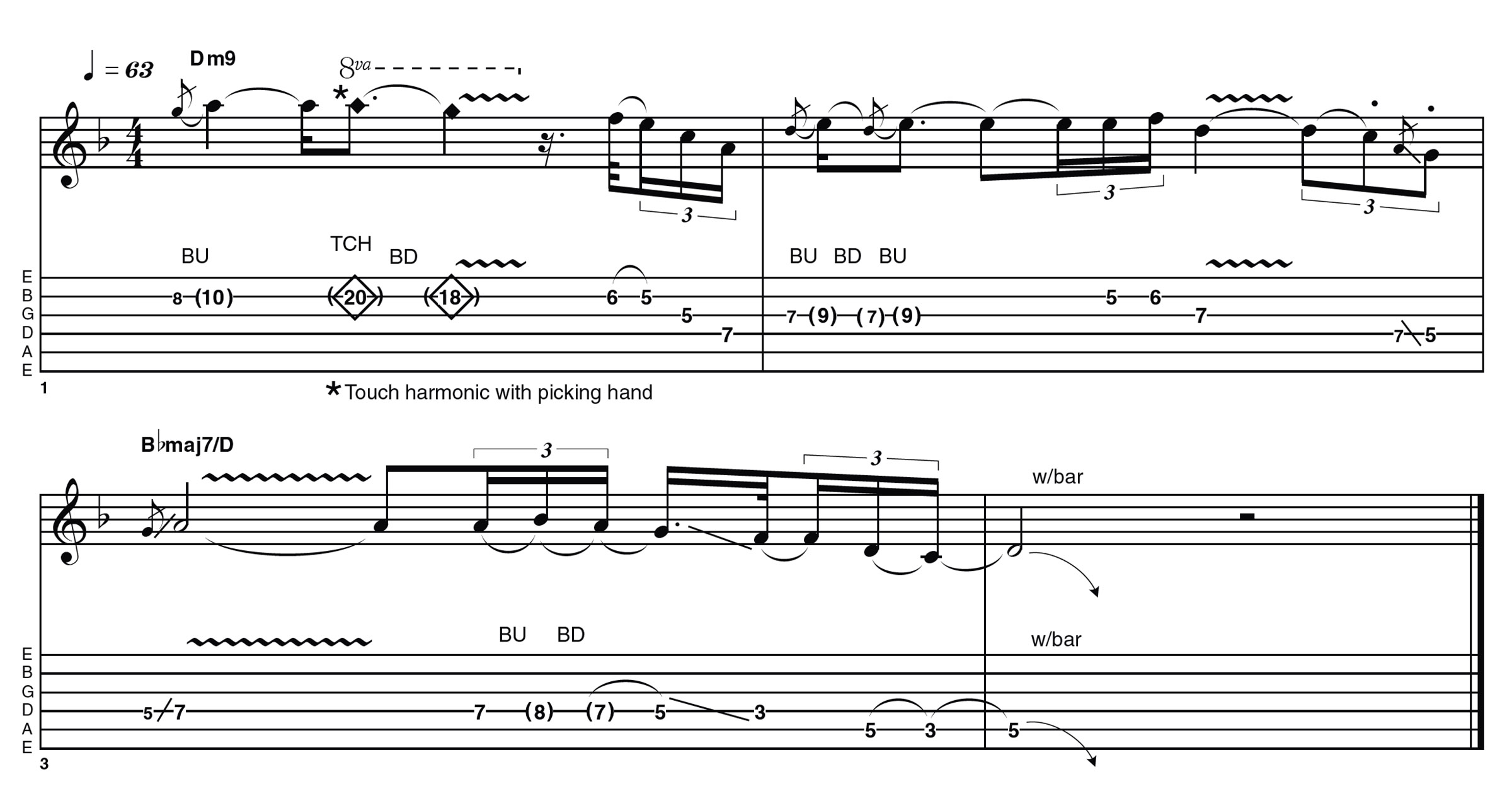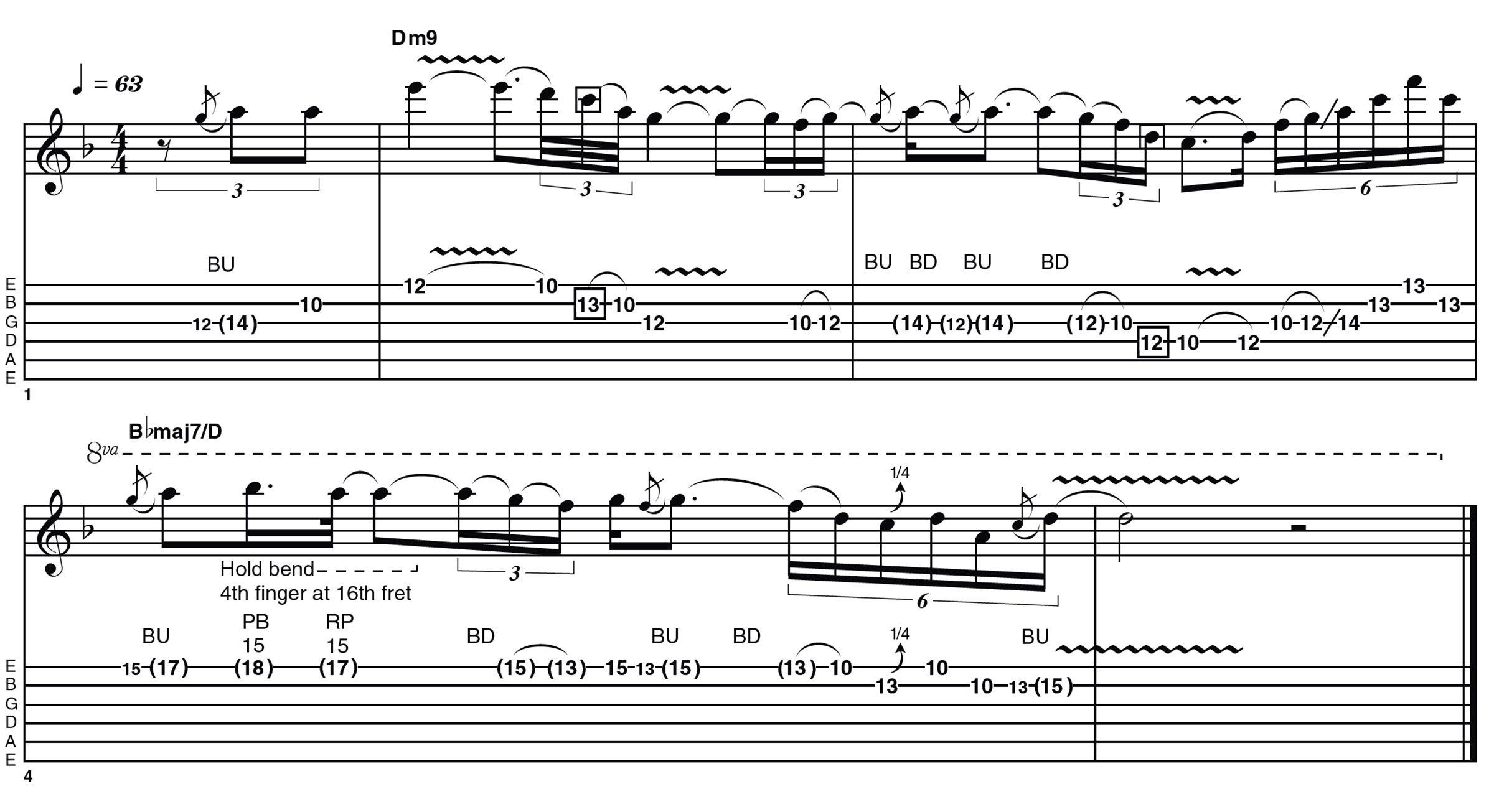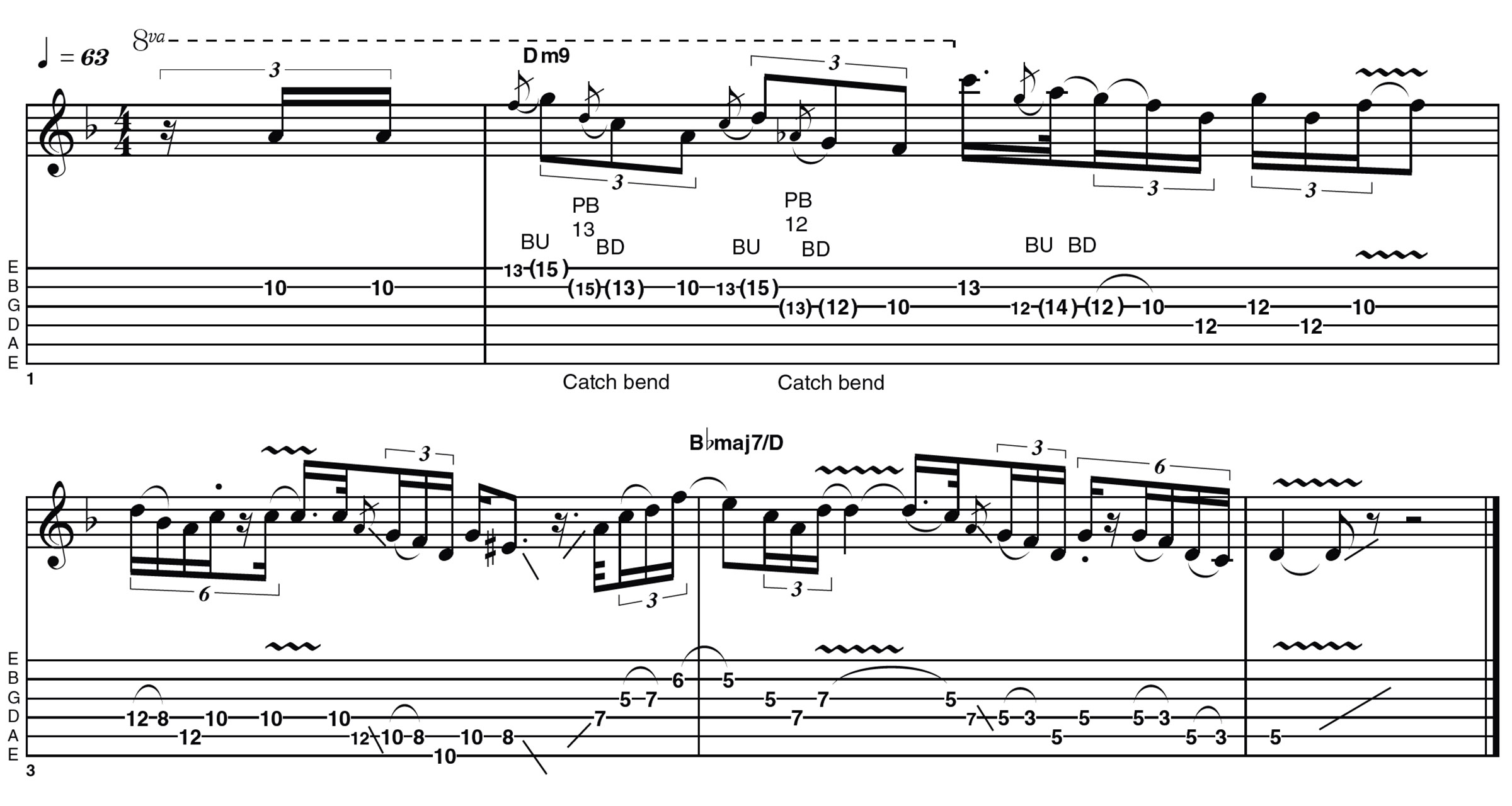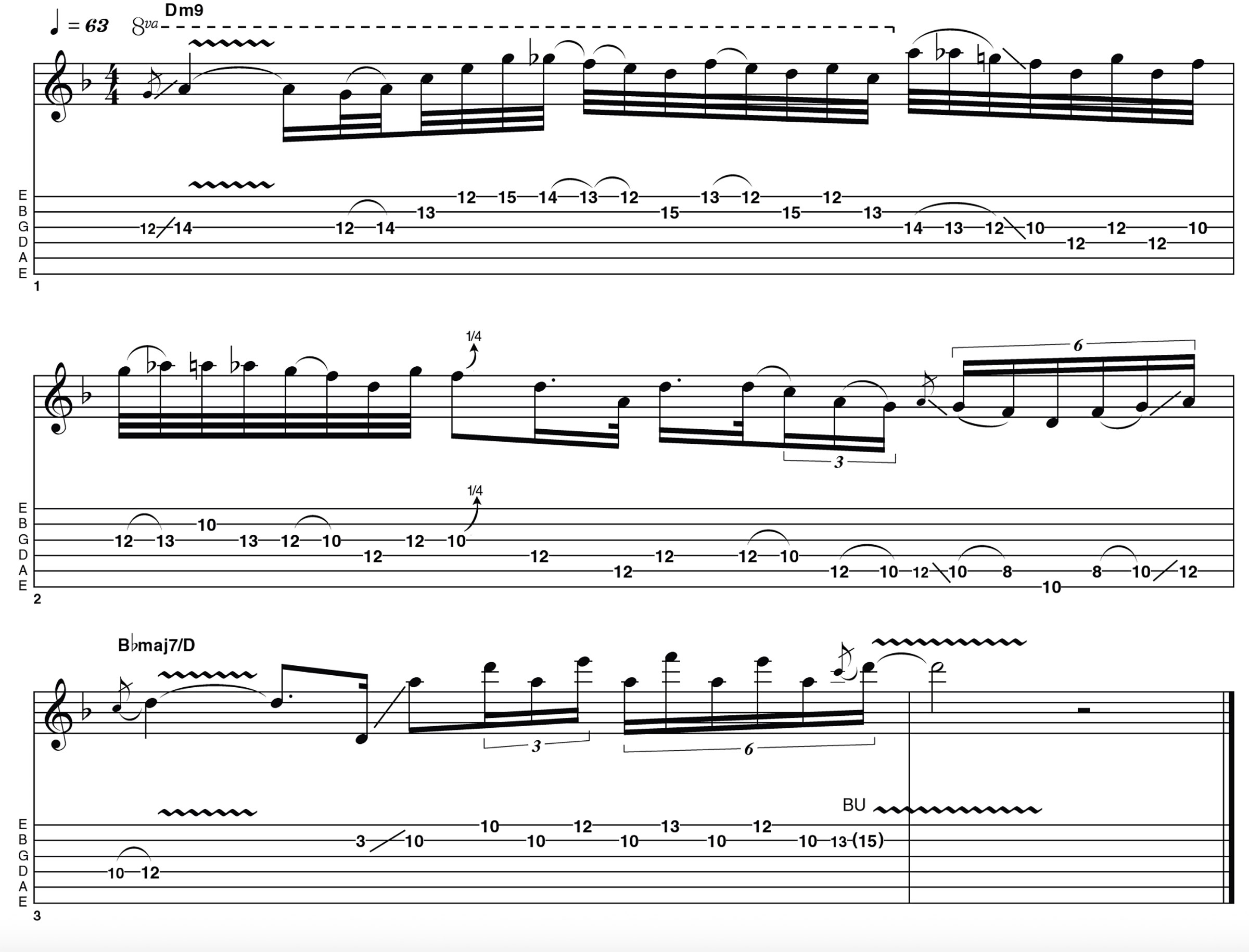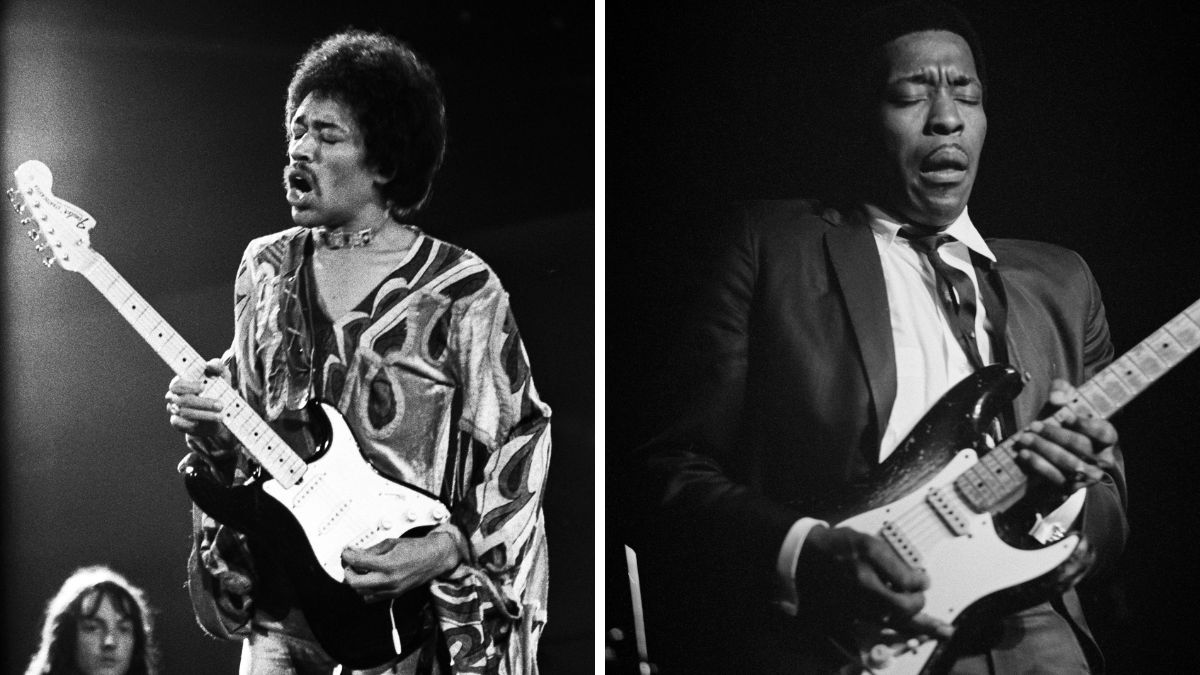“Anyone who has ever heard Toto’s Hold The Line will know he can let it rip with the best of them”: 4 searing blues guitar solo ideas in the style of Steve Lukather
Lukather might have made his name in box-office rock and pop, but the blues underpins it all, and this quick-fire tutorial with tab and audio unleashes some serious soloing heat

Steve Lukather is renowned for his virtuosic yet melodic playing with Toto. And then there are his numerous solo albums and prolific session work for Michael Jackson, Earth, Wind & Fire, Lionel Ritchie, and an unfeasible amount of the other albums and artists that emerged from LA during the late 70s and 80s.
Much of his skill was put to use creating memorable hooky parts on tunes such as Michael Jackson’s Human Nature, but Lukather’s first love was blues-based rock, with him citing Jimi Hendrix, Jimmy Page, David Gilmour, and Joe Walsh (among others) as primary influences.
Though Lukather is able to rein in his playing when the song requires it, anyone who has ever heard Toto’s Hold The Line or his solo material will know he is just as skilled at letting rip with the best of them!
The examples here were played separately but with the intention that they would work when heard together in the form of a continuous solo.
Their objective is to demonstrate how Lukather uses blues-based licks in a more ‘polished’ setting, rather than being a technical showcase. The emphasis is on melody over scale patterns, though there are a couple of more rapid chromatic ideas in the final bars to add a bit of excitement. Think Toto, Steely Dan, or any of the melodic ‘yacht rock’ bands.
I’ve gone with a fairly high-gain tone and occasionally opted for the neck pickup, as this is a tone Lukather is fond of. These ideas can be easily adapted (or ‘reverse-engineered’!) to fit over a more traditional blues backing if that’s more your thing.
Key areas to watch are the pitching/accuracy of string bends, not being afraid of pauses between phrases, and rhythmic tightness where relevant. I hope you enjoy these examples.
All the latest guitar news, interviews, lessons, reviews, deals and more, direct to your inbox!
Example 1
This first example can be viewed as predominantly D minor pentatonic (starting out in shape 4), but there are elements of the D minor scale, too. After that first bend, I’m touching the harmonic 12 frets up (at the 20th fret) to get a pseudo ‘feedback’ effect an octave above.
This is worth trying elsewhere as well, but it works best at volume or with a healthy amount of gain. Note the rhythmic phrasing towards the end, contrasted with the long-held divebomb to finish the line.
Example 2
Predominantly based around the shape 1 D minor pentatonic, this example makes a feature of the 9th (E) at the start, in keeping with the Dm9 chord in the backing.
As we go on, held notes are deliberately contrasted with quicker bursts, before we shift to shape 2 and a signature bend with a semitone raise to Bb added with the fourth finger. This can be surprisingly tricky, so don’t be too annoyed if it doesn’t fall into place immediately!
Example 3
Switching to the neck pickup, we’re about to get more rhythmic – but not before a couple of Joe Walsh-style double string bends. By this, I mean bend one string up, then switch to the adjacent string for a pre-bend, then down. This sounds way more complicated than it is, so check the transcription and watch the video and you should be fine.
Elsewhere, the rhythmic patterns are 90 percent pentatonic, but see if you can spot the D minor scale additions…
Example 4
If you look past the jazzy chromatic runs for a second, you’ll see that the basic patterns here are very much pentatonic, with extra embellishments added to the more conventional two-notes-per-string approach.
Though Lukather is very adept at alternate picking, he often mixes in more legato playing like this, with slides and pull-offs for a smoother, more relaxed feel. Once again, ideas like this fall under the fingers a lot more intuitively than it might seem at first.
Hear it here
Toto – Hydra
Released in 1979, Toto’s second album combined rock riffs with tight funk rhythms, plus, of course, lots of fleet-fingered soloing. The title track contains elements of prog and some nice bluesy soloing.
Also check out Mama and White Sister to hear Lukather in full flight. It’s interesting, decades later, to reflect on how much more ‘produced’ recordings generally sound in 2025, so to hear Lukather's tone and licks already fully formed like this really is testament to his tremendous talent.
Earth, Wind & Fire – Faces
Here are some great examples of Lukather’s session work from back in 1980. He manages to make it sound as if it’s the most natural thing in the world to move from soul/funk to rock soloing – and maybe it is for him!
Check out his ‘front-and-centre’ riffing and solo in Back On The Road; You Went Away also features some lovely (albeit more subtle) soloing on the play-out. Elsewhere, be sure to listen to the intro for Take It To The Sky, which has some impressive harp-style harmonics and jazz chord moves.
Steve Lukather – I Found The Sun Again
This 2021 solo album showcases how pivotal Lukather's guitar playing and vocals have been in Toto. Along For The Ride switches from a heavy psychedelic style riff to an out-and-out rock solo by the end, and you get the feeling this could have been the first take, as has often been the case in his studio work.
Journey Through displays a Jeff Beck influence with expressive whammy work. Be sure to listen to the title track to hear him negotiate some tricky chord changes while keeping a bluesy feel.
- This article first appeared in Guitarist. Subscribe and save.
As well as a longtime contributor to Guitarist and Guitar Techniques, Richard is Tony Hadley’s longstanding guitarist, and has worked with everyone from Roger Daltrey to Ronan Keating.
You must confirm your public display name before commenting
Please logout and then login again, you will then be prompted to enter your display name.

